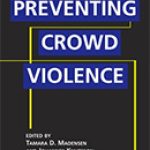Police Reform in China

Author: Kam C. Wong
Boca Raton, FL: CRC Press, Taylor & Francis Group, 2012. 388 pages
Reviewer: Min Liu | September 2012
When China ended its isolation from the outside world in 1978, the government initiated economic reforms and an open door policy that profoundly changed people’s lives. China’s resulting economic growth and expansion have been the subject of world-wide attention. While people are intrigued by this economic miracle and aspire to learn about various aspects of China, they are often disappointed by the fact that the open-door policy has not led to transparency of governance. Foreign scholars who are interested in studying Chinese issues more often than not become frustrated when they are denied access to government documents, or when their intentions to conduct investigations of sensitive issues in China are rebuffed. All that is available to them are scarce pieces of indigenous scholarly research and state-controlled media resources. Therefore, misunderstandings about China and prejudices against the country are not unusual. Police Reform in China, authored by a "China-bound" foreign scholar Kam Wong, is a good example of scholarship overcoming the barriers in conducting research in China. This new volume offers a comprehensive overview as well as an insightful analysis of police reform in China.
As the first example of systematic research on the subject, Police Reform in China examines policing in contemporary China by highlighting changes in police roles, missions, functions, values, cultures, organizational structures, operational procedures and practices, and so on, over the past three decades. The reform era provides China both opportunities and challenges. This book documents how the Chinese government and law enforcement authorities deal with various political, social, legal, and other issues confronting the police as China transitions from a static society to a mobile one, where over 120 million people are "on the move". These issues include, but are not limited to, an erosion of ideology, the abuse of powers, corruption, a loss of legitimacy, and a lack of resources.
The book begins with a brief history of the changes in the role, mission and functions of police in China since 1979. It goes on to document the inextricable connections between politics and policing by discussing the governing philosophies and management styles of four generations of Chinese leaders, from Mao, Deng and Jiang, to Hu-Wen, indicating that politics inevitably affect policing and the ongoing police reform in China.
Chapter 1 introduces the challenges and issues faced by the fourth generation — challenges that are subsequently discussed in other chapters. These include police corruption, rights consciousness, police legitimacy, the police-public relationship, etc.
Following a discussion of the difficulties encountered in trying to understand policing in China, the author offers a survey of police reform activities from 1999 to 2009, using a review of the policing literature published in one of China’s most prestigious and authoritative police policy publications. This overview of police literature provides readers with a comprehensive picture of policing in China as well as insight into fundamental changes in the areas of research, ideology, agendas, paradigms, leadership, and culture over three decades of police reform in China.
In addition to acquainting us with current scholarship, Wong’s review of Chinese empirical research informs us about other related issues such as education, reform agendas, principles and paradigms. The review demonstrates that the police reform policies and measures issued by the party leadership and the Ministry of Public Security reformers are evidence-based. The review also helps those who perhaps have incorrect impressions or even prejudices about policing in China to get a better idea of the real picture, while at the same time debunking the myth that empirical data in China are "either not available or inaccessible" (p.115).
The author examines problems and issues associated with regulating police powers and provides an overview of the legal framework governing police power, discretion, and the use of firearms. By way of example, Wong analyzes the nature, prevalence, pattern and causation of extended detention in China. He provides an overview of the police power regulatory regime, and examines a variety of sources on the supervision of police power, such as constitutional supervision, police work supervision and media supervision. Through the use of case studies, he demonstrates the measures taken by the Chinese government and police reformers to curb the abuse of police power and to regulate their use of firearms.
Wong also devotes several chapters to examining hotly debated issues such as corruption and the crisis of police legitimacy. The latter is evidenced by the deterioration of the public image of the police, resistance to police power, mass rebellions against police authority, mass incidents, police cynicism and young people’s perceptions of policing. Using data from online comments, Wong presents us a "much more complex and engaging story" (p 193), telling us how people think and feel about their government. He points out that the unsavory image of the police in China is partly real and partly constructed by the media. Values have changed in the last three decades, from collectivism to individualism, spiritualism to materialism, volunteerism to hedonism. He courageously challenges the presumption that the emergence of dissent, resistance, and rebellion against police is a result of police corruption, incompetency and abuse of power. Instead, he argues that it results from "a mismatch of values between police and various segments of society." He also predicts that "people from all walks of life will fight the police because they do not share the same values, outlook, and approach to life that police stand from" (p.195).
This book is a first attempt at a systematic study of policing in 21st century China. Drawing upon a variety of data sources- including indigenous scholarly research, governmental reports, surveys, media reports, and online public opinions, Kam Wong makes an important contribution to the currently scarce body of literature on policing in China. The book also provides foreign observers who are interested in human rights and social justice the necessary background knowledge about Chinese culture, history, values, and current social circumstances to form unbiased judgments about policing and social justice in China.
Min Liu, PhD,
Assistant Professor, Kean University.


